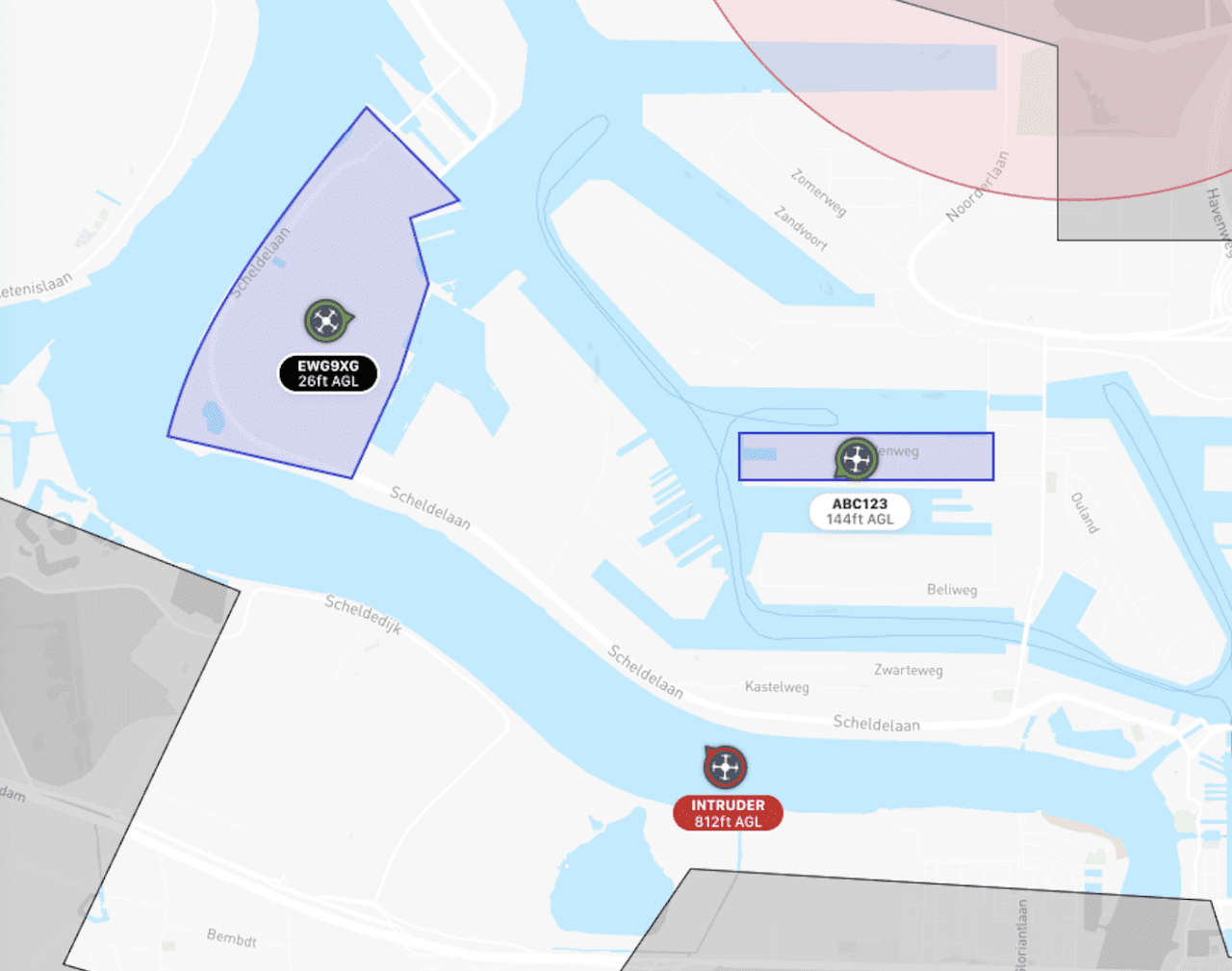
Unifly, based in Belgium, offers an unmanned traffic management (UTM) system. The company just announced €10 million in investments from Terra Drone Corporation and Japanese government fund JOIN.
Unifly, a Belgium-based UTM (unmanned traffic management) system provider, announced last week that they received €10 million in investments from Terra Drone Corporation and Japanese government fund JOIN. Unifly was founded in 2015 and initially operated as a spin-off company of the Flemish institute for technological research, VITO. The key features of their UTM platform are planning and managing drone operations, automating real-time maps of airspace activity, and in-flight communication with air traffic controllers (ATC).
In the last year, Unifly collaborated with air navigation service provider (ANSP) NAV CANADA in launching NAV Drone for operators to fly drones in the Canadian airspace. Two other recent achievements were partnering in development of an automated digital drone management platform as part of a contract with Spanish air navigation service provider (ANSP) ENAIRE, and developing and launching a UTM platform with Port of Antwerp. In addition to the UTM platform, Unifly also offers a broadcast location and identify platform (BLIP) in the form of a self-powered “e-identification” device.

The UTM system from Unifly enables authorities in real-time to monitor, approve, and manage drone operations in restricted zones.(Photo courtesy of Unifly)
The preparations to go live with a U-Space compliant system in Spain are underway, with partners working on implementation and demonstrations. The Spanish ANSP, Enaire, awarded the contract to the company Indra, in partnership with Airbus and Unifly. A key area of focus for Unifly is to guarantee scalability for a variety of use cases and functionalities to support increasing numbers of drones in operation.
Andres Van Swalm, co-founder of Unifly, offered some company updates and background in an interview with Avionics International. Before Unifly, he worked as an air traffic controller for the military. His knowledge and expertise in air traffic management (ATM) was particularly useful when founding Unifly and working to ensure safe operations in a complex airspace.

Pictured above is Unifly’s co-founder, Andres Van Swalm. (Photo, courtesy of Unifly)
“We want to use the investment to make sure our system is even more safe, secure, and efficient,” Swalm said regarding the €10 million in funding they recently received from Terra Drone and JOIN. As the team at Unifly continues to build their platform, he explained, “We will make sure that the system is even more scalable, easier to deploy, and more configurable for customers—they can configure it themselves, build upon our platform, and make their own customizations.” Based on customer feedback, he said, these capabilities are incredibly important.
“Customers can, in a few months, deploy the entire UTM system and configure it according to all specifications and regulations of the country. In comparison, ATM integration takes years to implement.”

The platform enables drone pilots to safely plan, validate, and monitor their operations and flights. (Photo courtesy of Unifly)
A unique feature of Unifly’s UTM platform is that it can be deployed at any location independently of the cloud provider. The team had decided from the beginning not to build on one cloud provider. “We believe ANSPs will play an important role, so the unique feature of being independent from cloud is very important,” remarked Swalm.
Another key concept of the UTM platform is configurability. Each country has its own regulations, so building the system to be configurable enables deployment in multiple countries. “Compared to manned aircraft, drones are a local phenomenon. Also, because of batteries, drones mostly will fly locally,” Andres Van Swalm explained. “We knew from the start that we needed to be able to configure our system to support all types of regulation and implementation. We have done implementations in Canada, and are now deploying the U-space concept in several countries. Regardless of deployment model, our system is configurable and scalable.”
Unifly has also rebranded their application to offer multiple languages, according to customer specifications and requests. Lastly, Swalm explained, the application explains regulations in ways that are easy for both commercial and recreational drone operators to understand.
One of Unifly’s contributions in the partnership with NAV CANADA was to automate the approval process, which increased efficiency and safety. Swalm noted, “When drones are going to operate within controlled airspace, instead of elaborate processes and emails [for approvals], we automated that process, ensuring lower risk for drone operators and more situational awareness for both operators and air traffic controllers.”
Swalm shared some details about the UTM platform launched at Port of Antwerp, which has become the first seaport in the world that manages its own airspace. “It’s a restricted airspace,” he stated. “Only aircraft which are permitted can fly there.” The Port of Antwerp itself has use cases for drones, and some of the companies located there, like BASF and Total, are also interested in starting drone operations.
One use case of interest is automated oil spill detection. The Port of Antwerp also hopes to automatically detect intruder drones that do not have approval to operate in the airspace. Another capability of the UTM platform is enabling tactical deconfliction. “Within a few months, they will start autonomous drone operations,” Swalm said.